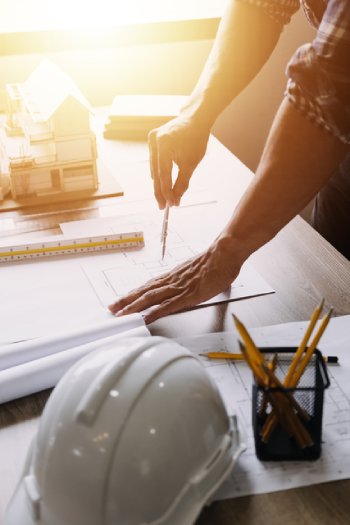Shaping Tomorrow’s Infrastructure
As infrastructure is firmly considered the backbone of the present society, it is undergoing deep changes. With burgeoning technology, sustainability, and urbanism, infrastructures are capable of being developed in a smarter and smarter fashion offered with resilience. Let us now walk through the big shifts occurring within the infrastructure market.
The Backbone of Modern Society
There are certain ways by which the development should keep changing as cities grow and infrastructure demands increase. The future of infrastructure will rely upon possibilities of adaptation for the long term, sustainability, and resilience. Hence, cities from around the world use innovative ways and means to future-proof their infrastructure against the needs of a larger population with concern not spared even for the environment.
The Green Shift
Sustainability has been still considered the very backbone of infrastructure planning and construction. Cities currently tend to redefine greenness by meddling with environmental impacts and, inversely, improving the quality of life as the guilt of climate change weighs heavier. Thinking about green materials and energy-efficient technologies from the perspective of sustainable infrastructure projects has led us to this step abroad.
The Rise of Clean Energy
The world is increasingly leaning toward cleaner renewable energy sources. With growing energy needs, the demand for sustainability and energy independence is becoming stronger. Let us examine the clean-energy innovations and challenges that are making the future of the industry.
The future of clean energy isn’t just about improving current technologies; it's also about exploring new ways to generate and store energy. Emerging trends like decentralized energy grids, energy storage advancements, and smart grids will continue to push the envelope in the coming years. Discover the trends and forecasts that will define the energy landscape between now and 2030.
The Future of Construction
Construction is at the crossroads of tradition and innovation. While the industry still relies on time-tested methods, new technologies are driving efficiency, sustainability, and safety improvements. Let’s explore the breakthroughs shaping construction as we know it.

Innovation in Construction
Construction is undergoing a massive transformation, driven by advancements in technology, sustainability, and project delivery methods. While the foundation of construction remains the same, creating functional, safe, and comfortable spaces, the tools and techniques used are evolving rapidly. Today’s construction industry embraces automation, 3D printing, robotics, and AI to streamline processes and improve outcomes.
Sustainable Building Practices
As the need for environmentally responsible development grows, construction is becoming increasingly focused on sustainability. This includes using eco-friendly materials, designing energy-efficient buildings, and integrating renewable energy solutions into construction projects. We'll take a look at the sustainable practices shaping the construction industry and how they’re helping reduce the sector’s environmental impact.
Smart Construction Technologies
The future of construction is digital. Technologies like Building Information Modeling (BIM), robotics, and drone-based surveying are transforming how projects are planned, managed, and executed. These innovations are not only improving efficiency and reducing costs but also enhancing the quality and safety of construction projects. Explore how these smart technologies are set to dominate the construction landscape in the coming years.
Real Estate by 2030
Evolution of urban structures and with evolving technologies will bring about changing real estate markets. A city laying upon the framework of being smart, connected, and sustainable offers new opportunities and concomitant challenges for the real estate developers and investors. Let us now forecast the likely changes in this market over the next ten years.

The Changing Face of Real Estate
By 2030, the real estate market will look vastly different. The days of sprawling suburban developments may be numbered, as cities evolve into dense, smart urban hubs with a focus on sustainability and connectivity. The real estate sector is adapting to these changes, from the rise of smart buildings to new ways of designing mixed-use spaces that accommodate work, play, and living all in one place.
The Smart City Revolution and Real Estate
Real estate is now evolving into smart cities. The application of integrated technologies, digital connectivity, and green measures will see buildings and neighborhoods of the future evolve to be efficient, environmentally friendly, and flexible. A real smart will be from security systems all the way to buildings equipped with smart energy features: a design of architecture with a brain. Below are some of the emergent technologies that will impact real estate in the future.
Real Estate Investment Trends
Today in real estate, technology and sustainability are causing so much change that investment areas are also transforming. It will look at what real estate-market areas are apt to stand in for major growth until 2030. From urban renewal programs to the ever-increasing demand for sustainable and technology-enabled properties, this section will give you the insider perspective on what to look for.
A Vision for Smarter Cities
Once thought of as a far-off dream, it soon gained momentum and established itself commercially with time. Beginning with interconnected spaces forged through technology and data, slowly thoughts are entering into urban planning and even into the way daily life is conceived.
It is a steady movement toward higher efficiency, higher reactivity, and higher sustainability starting from self-driving trams to energy management coupled atop real-time optimization approaches. This transformation toward smartness disfigures the very life in the city-from the smart traffic management decongesting masses to green buildings that relatively save energy and protect the course environment.
"Smart Cities":
— Andrew Price (@AndrewAPrice) August 27, 2021
Any city that utilizes overengineered solutions for simple problems, and requires a global network of technology and specialists to maintain, is in fact, dumb.
Any city that is so low-tech that can it can be maintained by locals with local materials, is smart. pic.twitter.com/5SqUlAok7g